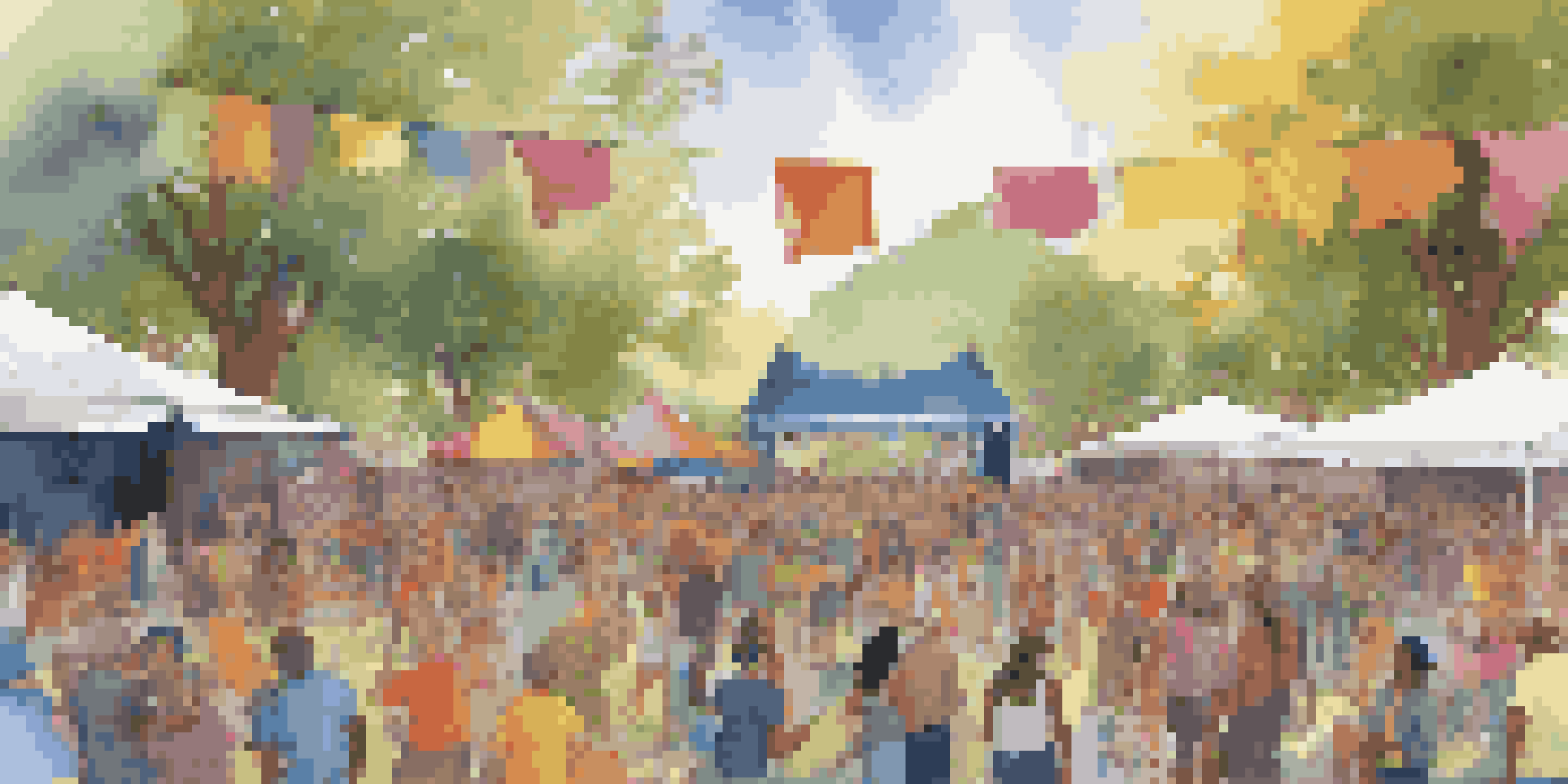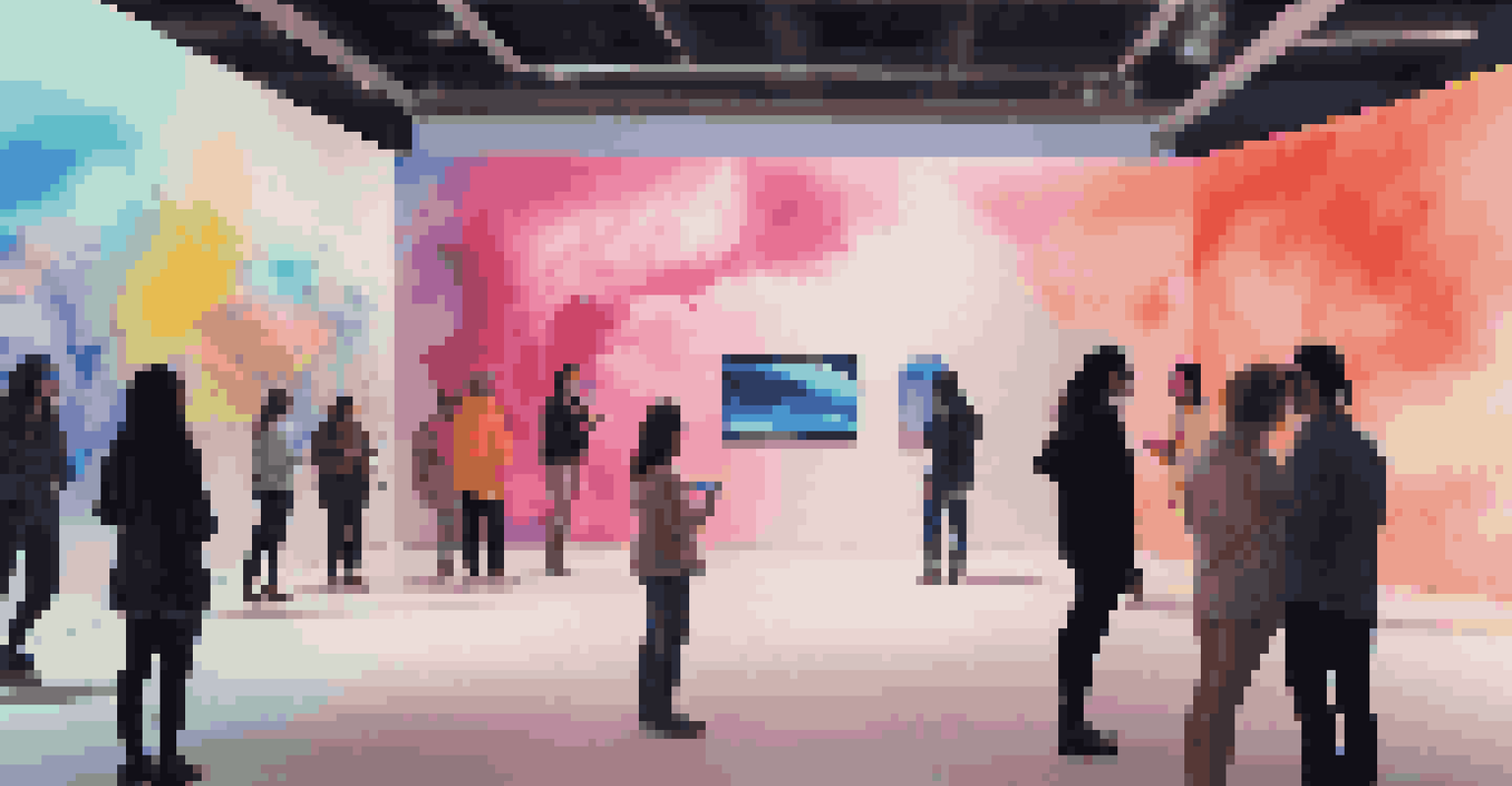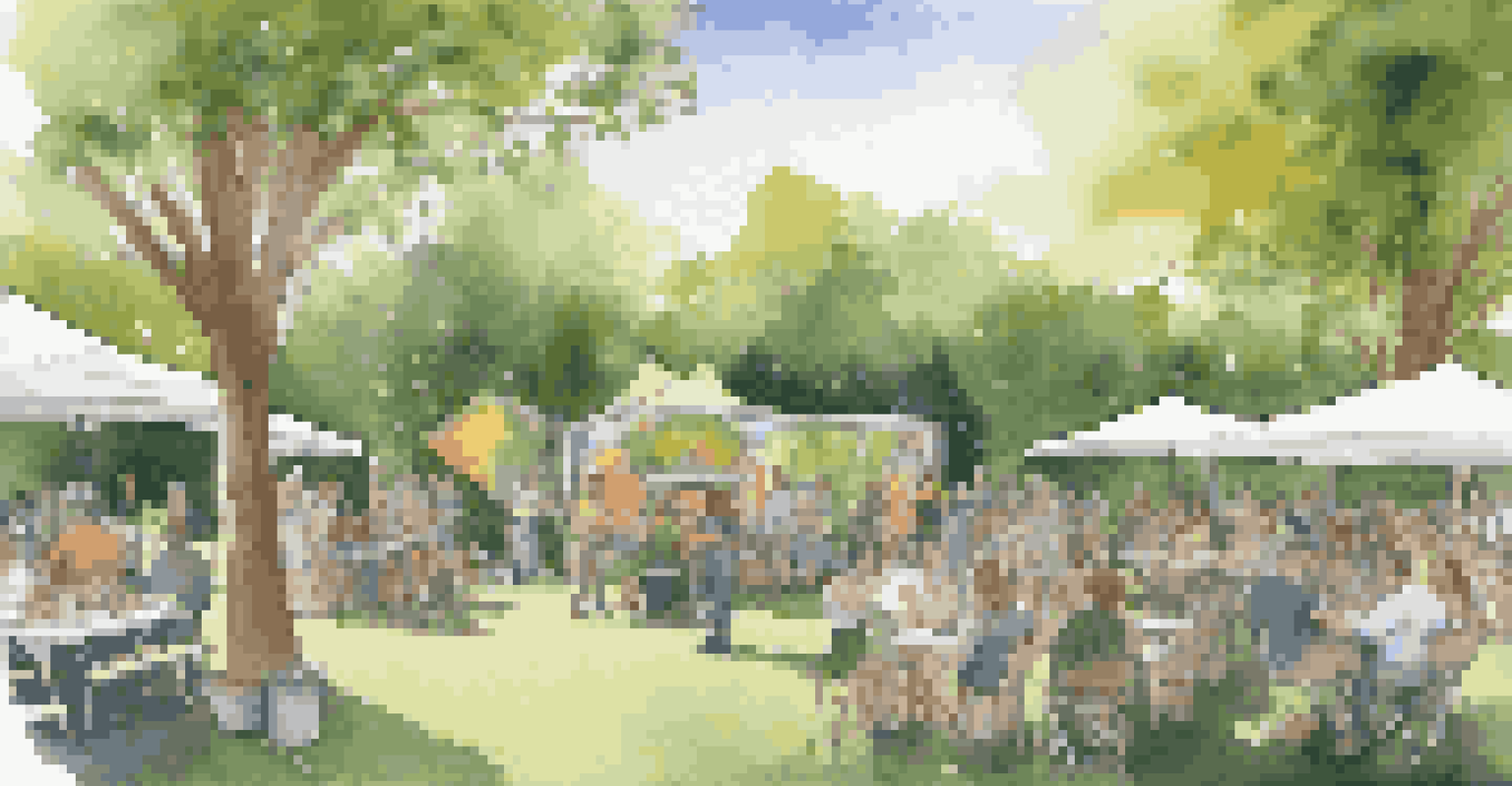Art and Live Music: Innovations in Collaborative Events

The Rise of Collaborative Events in Art and Music
In recent years, the fusion of art and live music has become increasingly popular, captivating audiences with unique experiences. Artists and musicians are now working together to create events that are more than just performances; they are immersive experiences. This collaboration not only brings different art forms together but also fosters creativity and innovation within the community.
Art is the most beautiful of all lies; it is a vision of reality that transcends everyday life.
Take, for example, the trend of live painting during concerts, where visual artists create masterpieces in real-time while musicians perform. This dynamic interplay between sound and sight invites attendees to engage with both forms of art simultaneously. Such events challenge traditional boundaries and encourage audience participation, making the experience memorable.
As the demand for unique entertainment grows, event organizers are realizing the potential of these collaborative efforts. By merging art and music, they can create multi-sensory experiences that resonate deeply with attendees, leading to a new wave of cultural appreciation and engagement.
Innovative Technology Enhancing Collaborative Events
Technology plays a crucial role in shaping the future of collaborative art and music events. With advancements like augmented reality (AR) and virtual reality (VR), artists can push the boundaries of creativity and audience interaction. Imagine walking through a gallery where the paintings come to life with music, allowing you to experience both art forms in a completely new way.

These innovative technologies not only enhance the visual experience but also create an emotional connection between the audience and the art. For instance, some events use interactive projections that respond to live music, allowing attendees to see how sound influences visual art in real-time. This level of engagement can transform a passive audience into active participants.
Art and Music Create Unique Experiences
Collaborative events merge art and music, resulting in immersive experiences that engage audiences on multiple sensory levels.
Furthermore, social media and streaming platforms have made it easier for artists and musicians to collaborate on a global scale. Live-streamed events can now include artists from various locations, broadening the reach and impact of these collaborative experiences. This connectivity encourages a rich exchange of ideas and cultures, further enriching the world of art and music.
The Impact of Collaborative Events on Local Communities
Collaborative art and music events can significantly impact local communities, creating a sense of belonging and shared experience. These events often bring together diverse populations, fostering connections among individuals who may not have interacted otherwise. This communal atmosphere promotes inclusivity and encourages local talent to shine.
Music can change the world because it can change people.
Consider community festivals that showcase local artists and musicians, where the entire neighborhood comes together to celebrate creativity. Such gatherings not only support local economies but also strengthen community ties, as people share in the joy of artistic expression. They become a platform for emerging artists who might not have otherwise had the opportunity to showcase their work.
Moreover, these events can help raise awareness about social issues, using art and music as powerful vehicles for change. By addressing topics such as environmental sustainability or social justice through creative expression, collaborative events can inspire action and dialogue within the community.
Curating Unique Experiences: The Role of Event Planners
Event planners play a pivotal role in the success of collaborative art and music events. Their expertise in curating unique experiences helps to ensure that all elements come together harmoniously. From selecting the right artists to coordinating logistics, event planners are the backbone of these creative gatherings.
An effective event planner understands the synergy between art and music, carefully choosing how they complement each other. For instance, they might select a contemporary artist whose work reflects the themes of the music being performed, enhancing the overall experience for attendees. This thoughtful curation elevates the event, making it more cohesive and impactful.
Technology Transforms Event Interactions
Advancements in technology, like AR and VR, enhance audience engagement and create emotional connections during collaborative events.
Additionally, planners often incorporate interactive elements, such as workshops or Q&A sessions with artists, to deepen audience engagement. By providing opportunities for attendees to connect directly with creators, these events foster a greater appreciation for the arts. The result is a richer, more immersive experience that leaves a lasting impression on all who attend.
The Influence of Pop Culture on Collaborative Events
Pop culture has a significant influence on the types of collaborative events that emerge in the art and music scene. Trends from movies, television shows, and viral social media moments can inspire unique event concepts that resonate with audiences. This cultural relevance helps attract larger crowds and creates buzz around the events.
For example, themed events based on popular films or music genres can draw fans eager to celebrate their favorite franchises. These events often incorporate visual art installations, live performances, and interactive experiences that reflect the essence of the theme. Such creativity not only entertains but also connects people who share similar interests, fostering a sense of community.
Moreover, collaborations with influencers and artists who resonate with pop culture can amplify the reach of these events. By leveraging social media platforms, organizers can create anticipation and excitement, ensuring that their events stand out in a busy entertainment landscape. This blend of art, music, and culture keeps the events fresh and relevant.
Sustainability in Collaborative Art and Music Events
Sustainability has become a crucial consideration in the planning of collaborative art and music events. As environmental awareness grows, organizers are seeking ways to minimize their ecological footprint while still delivering unforgettable experiences. This shift is not only beneficial for the planet but also resonates with increasingly eco-conscious attendees.
From utilizing eco-friendly materials for installations to reducing waste through digital ticketing and promotions, many events are embracing sustainable practices. For example, artists may use recycled materials in their creations, while musicians can opt for energy-efficient sound systems. These choices demonstrate a commitment to environmental responsibility and inspire attendees to reflect on their own impact.
Sustainability Shapes Future Events
As eco-consciousness rises, event organizers are prioritizing sustainable practices to minimize environmental impact while enhancing attendee experiences.
Additionally, incorporating education about sustainability into these events can enhance their impact. Workshops or panels discussing environmental issues can provide valuable insights and inspire action among participants. This focus on sustainability not only enriches the event experience but also fosters a community dedicated to making positive changes.
The Future of Art and Live Music Collaborations
As we look to the future, the landscape of collaborative art and music events is poised for exciting growth. The continued integration of technology, evolving cultural trends, and a focus on sustainability will shape how these experiences are designed and delivered. This evolution presents endless opportunities for artists and musicians to innovate and inspire.
Emerging platforms and tools are making it easier for creators to collaborate across disciplines, breaking down traditional barriers. As artists experiment with new formats, audiences can expect more dynamic and engaging experiences that challenge the status quo. This spirit of experimentation will likely lead to fresh artistic expressions and unforeseen collaborations.

Ultimately, the future of art and live music collaborations hinges on community engagement and the willingness to embrace change. As audiences seek unique experiences that resonate with their values, the arts will continue to evolve, creating a vibrant tapestry of creativity that reflects the world around us.